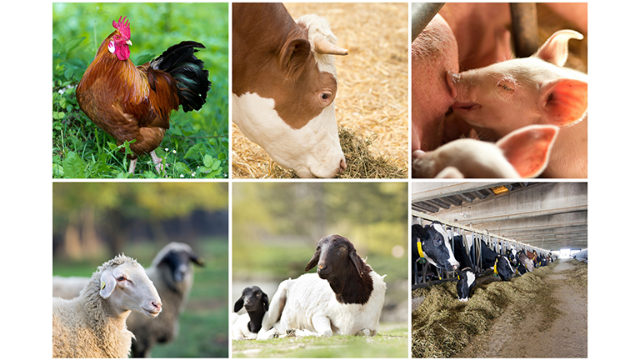THE INDIAN LIVESTOCK SECTOR – AN OVERVIEW AND ITS ROLE ON AGRICULTURAL SUSTAINABILITY
Dr. Jeyapriya.S
Ph.D Scholar, Department of Livestock Products Technology
Guru Angad Dev Veterinary and Animal Sciences University, Ludhiana
Email: priyacharmant@gmail.com
ABSTRACT:
Only a country free of hunger and poverty can achieve sustainable development. Agriculture and livestock are critical to the world’s food supply. The livelihood of millions of poor people is dependent on livestock. Sustainable livestock systems are required to protect these livelihoods. Livestock production constitutes a very important component of the agricultural economy of India, a contribution that goes beyond direct food production to include multipurpose uses, such as skins, fiber, fertilizer and fuel. Furthermore, livestock are inextricably interwoven to the social and cultural life of several million resource farmers, for whom animal ownership assures varied degrees of agricultural sustainability and economic security. Small farm households earned 16 percent of their income from livestock, compared to 14 percent for all rural households. Two-thirds of rural communities rely on livestock for their livelihood. The livestock industry accounts for 4.11 percent of GDP and 25.6 percent of overall agricultural output. As a result, the changes that come with expansion provide a chance for the livestock sector to evolve toward more sustainable development and a greater contribution to agricultural and human diets.
Keywords: livestock, agriculture, sustainable, livelihood
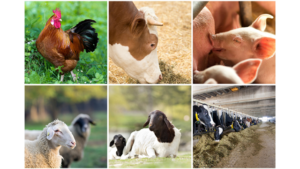
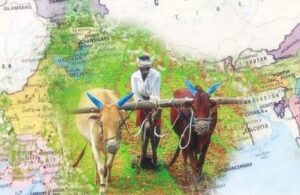
The livestock industry is an important part of the global food system, contributing to poverty alleviation, food security, and agricultural growth. Livestock generates 40% of worldwide agricultural output and supports the livelihoods and food and nutrition security of about 1.3 billion people, according to the FAO.
Livestock play an important part in sustainable food systems—for example, manure is an important source of natural fertilizer, and livestock utilized as draught animals can help enhance production in areas where automation is limited. For vulnerable communities, livestock is a valuable resource.
Higher demand has resulted from increased incomes, changing diets, and population growth, making the livestock sector one of the fastest expanding agricultural sub-sectors in middle- and low-income countries. Throughout the livestock supply chain, this creates a significant potential for smallholders, businesses, and job creators. However, if growth is not effectively managed, it risks exacerbating issues of span equity, environmental impact, and public health (Jimmy et al., 2013).
Position of Livestock Sector
Agriculture and livestock production are interwoven, and both are critical for the nation’s overall food security. In India’s agricultural economy, the livestock sector is a significant sub-sector. For the majority of farmers, it is an essential aspect of their livelihood and aids in the continuation of farm operations. Furthermore, it provides important inputs to agriculture, contributes to household health and nutrition, supplements earnings, creates jobs, and, finally, serves as dependable “banks on hooves” in times of need.
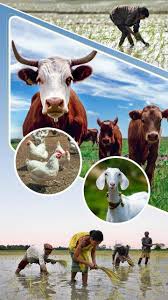
- According to estimates of the Central Statistics Office, the value of livestock sector output was about Rs. 9, 17,910 crores at current prices during 2016-17 which is about 31.25 percent of the value of output from agricultural and allied sectors. At constant prices, the value of output from livestock sector was about 31.11 percent of the total value of output in agricultural sector.
- According to the Central Statistical Office, DAHD (2019), during year 2017-18, the contribution of livestock sector to national Gross Domestic Product (GDP)/ Gross Value Added (GVA) was 4.10 percent.
- The value of export of livestock and livestock products during 2017-18 was Rs. 457.76 billion while value of import was Rs. 104.24 billion.
- As per estimate of National Sample Survey 68th round (July 2011 – June 2012) as cited in DADF undertaken on employment, it is revealed that livestock sector is engaging 16.44 million workers in the activities of farming of the animals, mixed farming, fishing and aquaculture. India’s livestock sector is one of the largest in the world. (DAHD, 2019)
As per the 20th livestock census of Department of Animal Husbandry and Dairying (DAHD) held in 2019:
The total livestock population in India was 535.82 million, which include 192.52 million cattle, 109.85 million buffaloes, 74.26 million sheep, 148.88 million goats, about 9.06 million pigs, 851.81 million poultry population and 0.85 million other livestock population .
Livestock Sector Statistics of India –
| First | Total Livestock Population, Milk Production, Cattle Population, Buffalo Population, Cara beef Production, Goat Milk Production, Total Bovine Population |
| Second | Goat Population, Bristle Production (a pig industry by-product), Fish Production
|
| Third | Sheep Production, Egg Production
|
| Fourth | Chicken Production |
| Fifth | Poultry Meat Production, Poultry Production, Meat production |
| Eigth | Duck Production |
| Ninth | Camel Population, Wool Production
|
India has a diverse range of animal breeds, including 43 indigenous cattle, 16 buffaloes, 34 goat, and 43 sheep breeds.
In the year 2018-19, the country’s total milk output increased by 6.50 percent to 187.75 million tonnes, more than double the global increase. This record production increased per capita milk availability to 394 gm per person per day, significantly higher than the ICMR’s recommended 280 gm per person per day. The top five milk-producing states are Uttar Pradesh, Rajasthan, Madhya Pradesh, Andhra Pradesh, and Gujarat, which account for 53.10 percent of the country’s total milk production. Indigenous Buffalos account for over 35% of milk output, with crossbred cattle accounting for 26%.
In 2018-19, total meat output increased by 6%. Poultry meat accounts for half of all meat output (4.06 million tonnes), followed by buffalo meat (19.50 percent). The production of poultry meat increased by 7.80%. The top five meat-producing states are Uttar Pradesh, Maharashtra, West Bengal, Andhra Pradesh, and Telangana, which account for 56.90 percent of total meat output in the country.
Egg production reached 103.32 billion in 2018-19, with an annual growth rate of 8.50 percent. Egg availability per capita is roughly 79 eggs per person per year, well below the ICMR’s suggested level of 180 eggs per person per year. Andhra Pradesh, Tamil Nadu, Telangana, West Bengal, and Haryana are the top five egg-producing states in the country, accounting for 65 percent of total egg production. Commercial poultry produces 84.91 billion eggs (82.20 percent), whereas backyard poultry produces 18.41 billion (17.80 percent).
The total wool production in the year 2018-19 reached 40.42 million kgs, which declined by 2.50 percent as compared to previous year. Rajasthan, Jammu and Kashmir, Telangana, Karnataka and Gujarat are the top five wool producing states. They together contributed 78.50 percent of the total wool production in country.
The livestock plays an important role in the economy of farmers. The farmers in India maintain mixed farming system i.e. a combination of crop and livestock where the output of one enterprise becomes the input of another enterprise thereby realize the resource efficiency. (DARE, 2019)
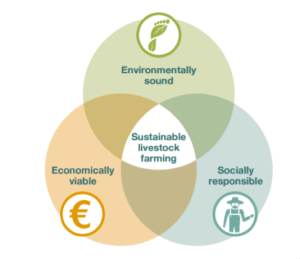
Livestock as a source of production inputs for agricultural development to be sustainable
Livestock as an energy source
Bovines, equines, camelids, and elephants are all utilized as draught animals for a range of tasks, including pulling agricultural implements, pumping irrigation water, and skidding in the woods. A total of 400 million animals are currently employed for draught purposes. Only draught animals and manual tools are used to farm 52% of the cultivated area in developing countries (excluding China). The number of cattle and buffaloes utilized for draught as well as meat and milk production has increased by 23% in the last ten years. The number of equines (horses, mules, and asses) utilized largely for draught and transportation has not changed much over the same time period. Animal power is a renewable energy source in many developing nations. Draught animal power can be even more economic when one bullock is used instead of a pair or when a (cross-bred) cow is used instead of a male, since it reduces the cost of maintaining the larger herd necessary to satisfy both replacement and milk production requirements. (Mota et al.,2021)
Dung for fuel
Cow dung is highly valued as a cooking and heating fuel, minimizing the need for wood or fossil fuels. It is the primary source of fuel for millions of farmers’ homes. Every year, 300 million tonnes of dung are utilized for fuel in India alone. Women earn money by collecting and drying dung for cooking. It can also be used as a direct ingredient in plaster and other building materials, and its ash can be utilized as fertilizer.
Biogas production
For farmers in tropical climates, biogas production from manure is an ideal option for fossil fuel or fuel wood. Women’s labour is reduced through on-farm biogas production, which eliminates the need for wood gathering and fuel purchases. It is user-friendly due to its convenience and improved hygiene, and it also delivers a variety of services, including illumination, hot water, and heating. Biogas can also be utilized to power equipment like water pumps. Effluent from bio digesters can be recycled as fertilizer, fish feed, or utilized to grow azolla and duckweed, with even greater outcomes than the original manure. To expand biogas growth, new simple technologies should be encouraged. Bio digestion has positive public-health aspects, particularly where toilets are coupled with the bio digester, and the anaerobic conditions kill pathogenic organisms as well as digest toxins, for example, botulinum.
Livestock as a source of fertilizer and soil conditioner
Nutrient recycling is an important part of any long-term farming system. Nutrient recycling is made possible by combining animals and crops. Crop leftovers, such as cereal straws, maize and sorghum stovers, and groundnut haulms, are fed to animals. The manure produced can be used as fertilizer right away. However, the chemical content of manure differs depending on the animal species (poultry manure appears to be a more efficient fertilizer than cow manure) and the animal’s diet. Manure offers significant organic matter to the soil, which helps to maintain its structure, water retention, and drainage ability, in addition to providing direct plant nutrients. Manure is so valuable that some farmers keep livestock just for the purpose of producing it.
Livestock-recycled secondary products, household and industrial wastes
Manure can not only be recycled for biogas and fertilizer, but it may also be used to feed other animals. Poultry manure, for example, is often used for ruminant feeding, and poultry and pig manures can be used to grow algae for fish feed.
When properly handled, by-products like slaughterhouse wastes provide a good source of protein (offal and viscera) and mineral (bones) additions in animal feeds. Pollution around canning operations comes from industrial fish waste. Drying it at a great expense in order to generate fish meal, which is then shipped to developed countries, is a widespread practice. The preservation of fish waste in molasses has proven to be a technically and economically viable solution.
Utilization of marginal lands and crop residues by livestock
In huge semi-arid or desert areas where crop cultivation is exceedingly dangerous, turn it to lucrative, high-quality products that would otherwise be wasted. These are, nevertheless, ecologically sensitive locations. Pastoralists built complicated management methods over the centuries that lasted until the recent substantial increases in population and cattle density. Overgrazing is the most serious hazard to these ecosystems, and to avoid permanent and irreversible deterioration, a holistic approach to resource management is required.
Crop residues, such as straw, are more efficiently utilized through ruminant feeding, including the production and use of manure and possibly biogas, rather than by burning them, creating pollution and contributing to global warming, or ploughing them back into the soil to improve its structure and water retention. Several hundred million head of cattle and buffaloes are fed throughout the year on rice and cereal straws. (Sansoucy, 2010)
Conclusion
Agriculture is the sole sector that contributes significantly to the creation of jobs, food for the masses, national income, foreign exchange, and raw materials for industry, among other things. Greater emphasis should be given to monogastric animals, as they are the main suppliers of meat and have been largely neglected in development programmes. Care must be taken to use alternative feeds that do not compete with human food. The importance of ruminants must not be forgotten, however, and particular attention is required to develop their role as a source of draught power. Greater attention should be given to the provision of facilities and credit that benefit the small-scale producer, rather than major investments in institutions and facilities, such as big slaughterhouses, dairy plants and feed mills, which are usually oversized, overstaffed and over equipped. Hence, the Indian economy’s development and sustainability depend on a strong and increasing agricultural sector. Agriculture has a crucial part in ensuring sustainable development by meeting fundamental requirements such as work, food, and shelter. As a result, agricultural growth is essential for increasing production, creating jobs, and providing money to the poor.
References
https://www.pashudhanpraharee.com/livestocks-contribution-to-indian-economy/
Department Of Agricultural Research And Education (2019), http://Vikaspedia,In.
Department Of Animal Husbandry And Dairying (2019), http://Dahd.Nic.In.
Jimmy Smith, Keith Sones, Delia Grace, Susan Macmillan, Shirley Tarawali, Mario Herrero, Beyond Milk, Meat, And Eggs: Role Of Livestock In Food And Nutrition Security, Animal Frontiers (2013).
Mota-Rojas D, Braghieri A, Álvarez-Macías A, Serrapica F, Ramírez-Bribiesca E, Cruz-Monterrosa R, Masucci F, Mora-Medina P, Napolitano F. The Use Of Draught Animals In Rural Labour. Animals (2021).
Sansoucy (2010), Livestock A Driving Force For Food Security And Sustainable Development.


